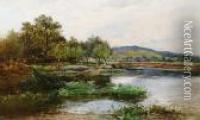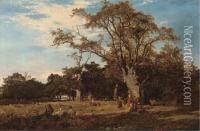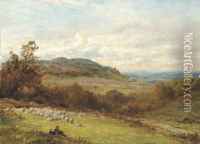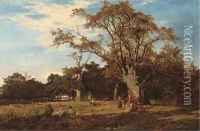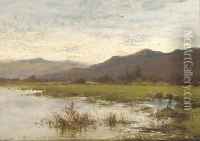Alfred Walter Williams Paintings
Alfred Walter Williams was a British landscape painter during the Victorian era, known for his depictions of the English countryside. Born in 1824 in London, England, he was part of an artistic family; his father, Edward Williams, and his brothers were also painters, often referred to as the Williams family of painters or the Barnes School.
Alfred developed a deep appreciation for the rural landscapes of England, and his work often reflects the tranquil and pastoral scenes of the Thames and its surrounding areas. His paintings are characterized by their meticulous detail, soft color palette, and serene atmosphere. Williams was particularly skilled in capturing the changing effects of light and season upon the landscape, which earned him considerable recognition during his lifetime.
He exhibited his work at prominent institutions such as the Royal Academy, the British Institution, and the Society of British Artists. Despite his notable skill and the popularity of his work, Williams did not achieve the same level of fame as some of his contemporaries. Nevertheless, his paintings were sought after by collectors and continue to be appreciated today for their contribution to the British landscape genre.
Throughout his career, Alfred Walter Williams remained dedicated to his vision of the landscape, eschewing the industrialization that was transforming England during his lifetime. He preferred instead to focus on the timeless and unspoiled aspects of the countryside. This choice resonated with many who sought refuge from the rapidly changing world in the idyllic scenes he portrayed.
Alfred Walter Williams passed away in 1905, leaving behind a legacy of peaceful and idyllic English landscapes. His works remain a testament to the beauty of the English countryside and continue to be studied for their technical proficiency and their embodiment of Victorian-era landscape painting.

